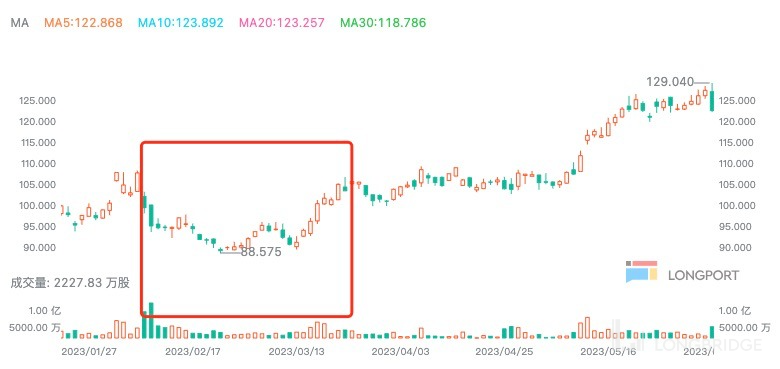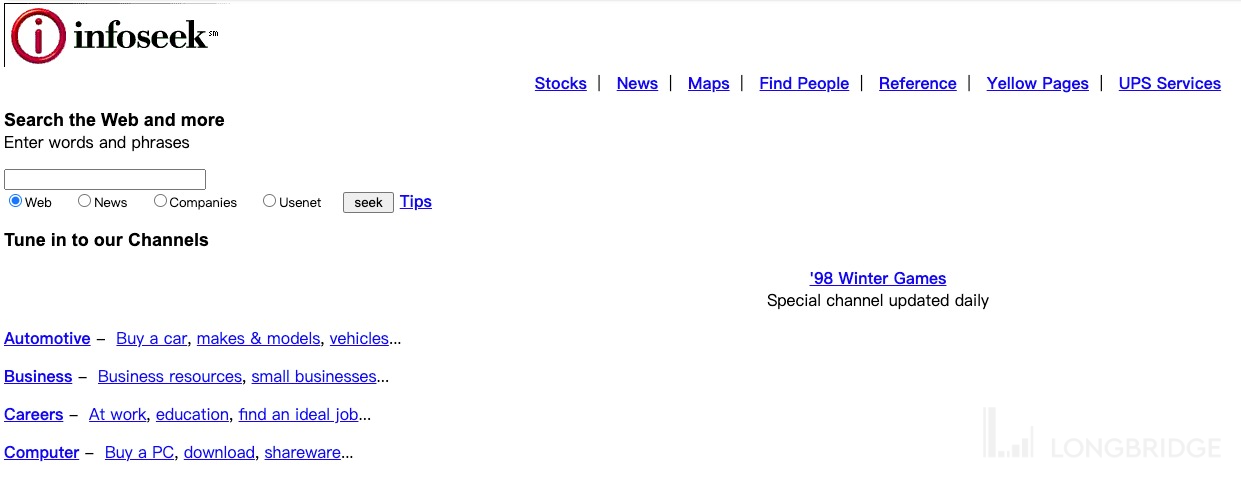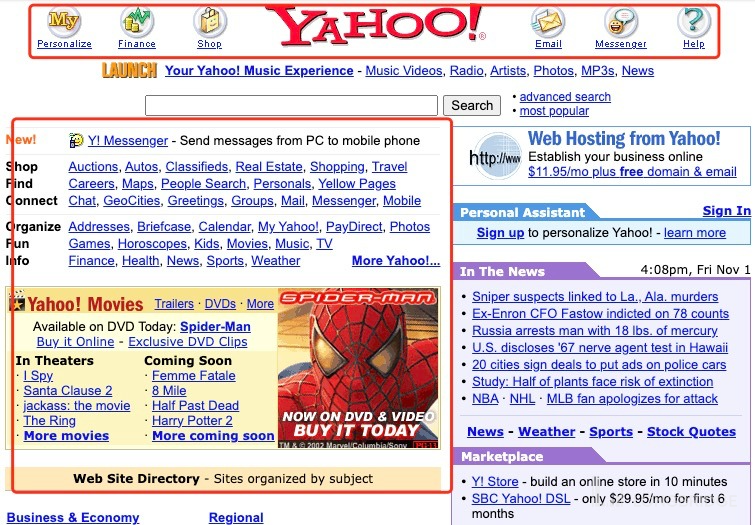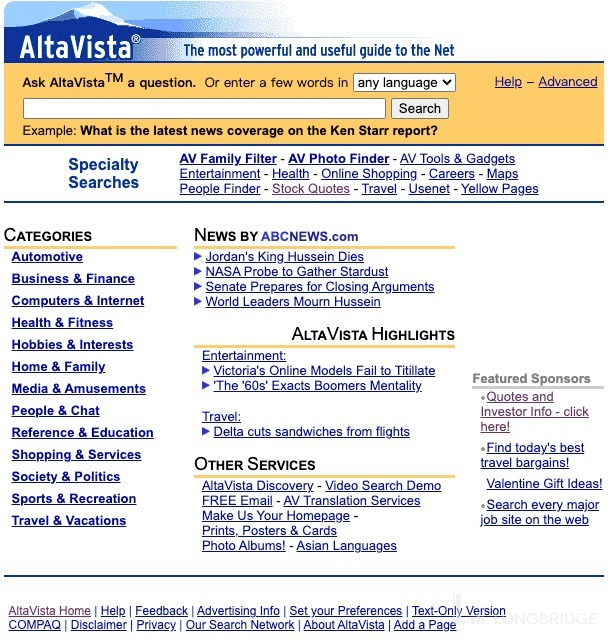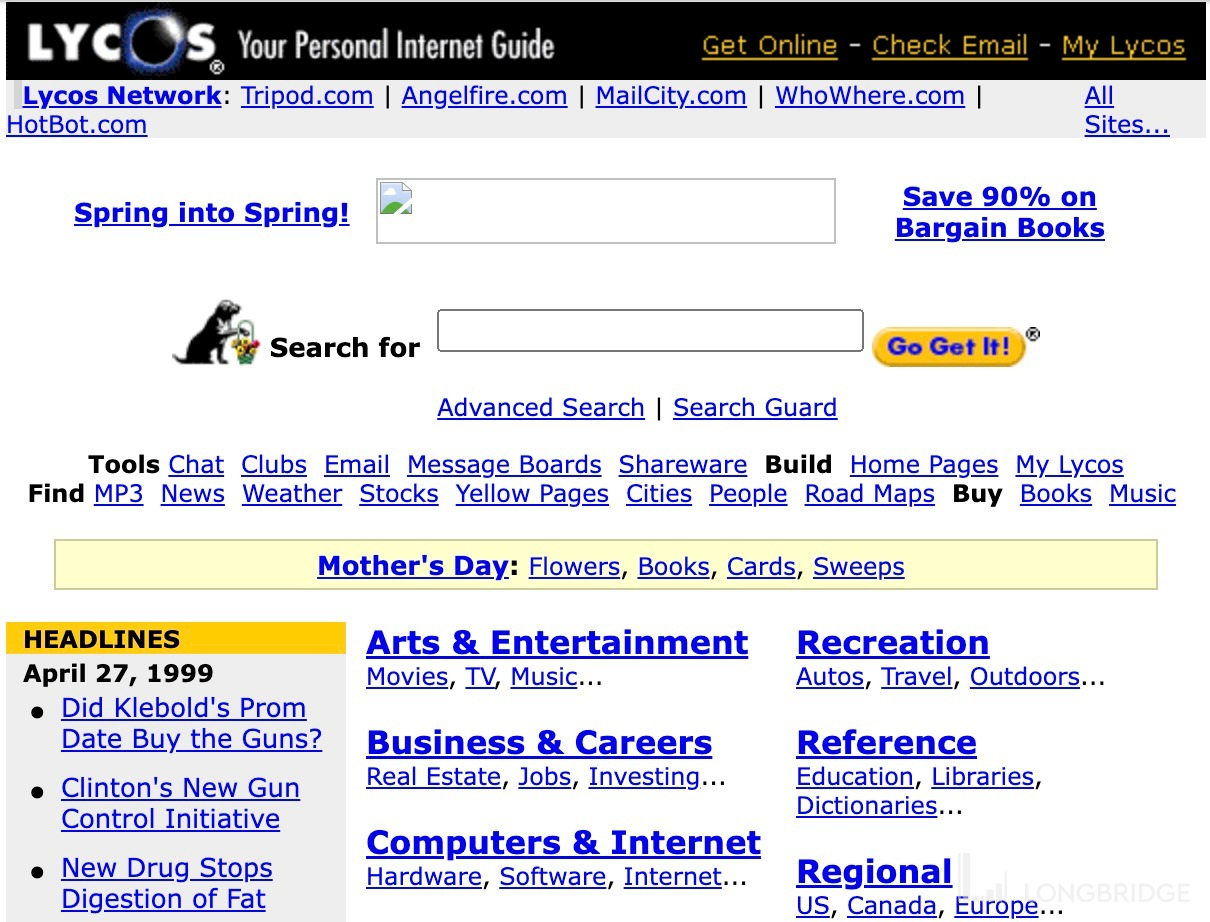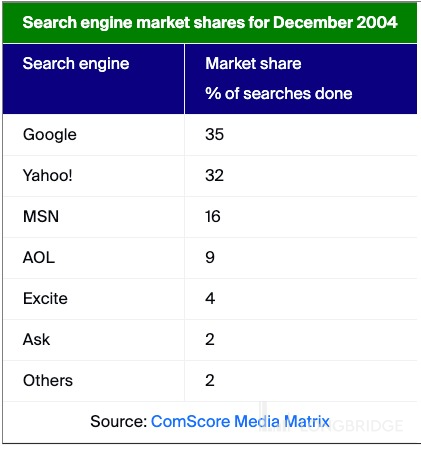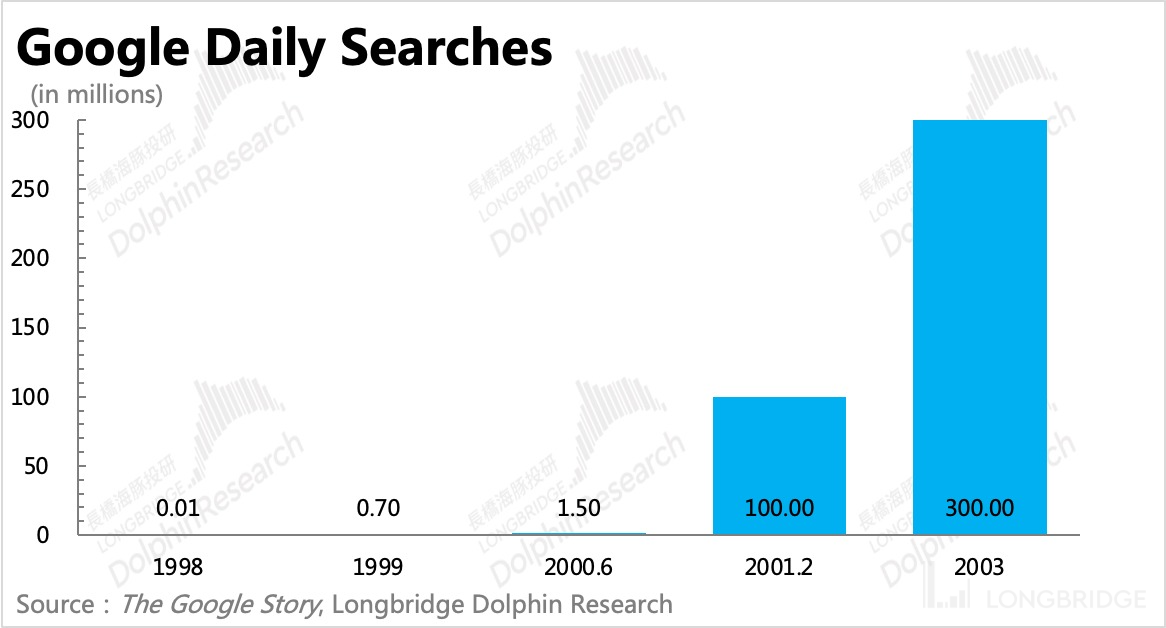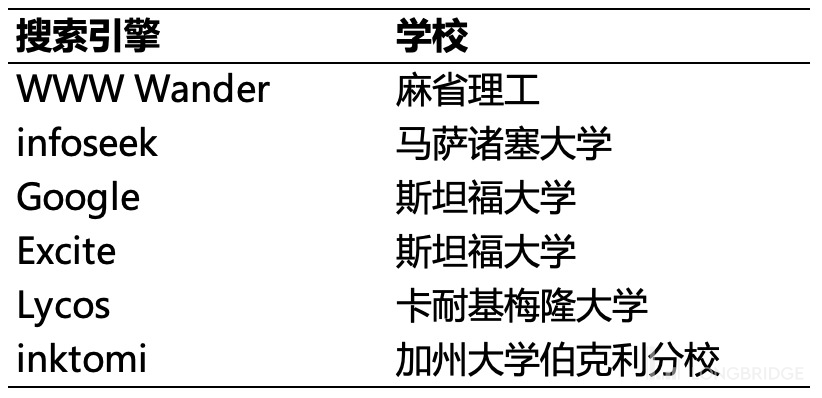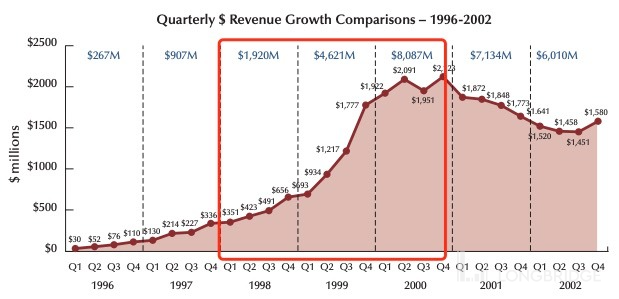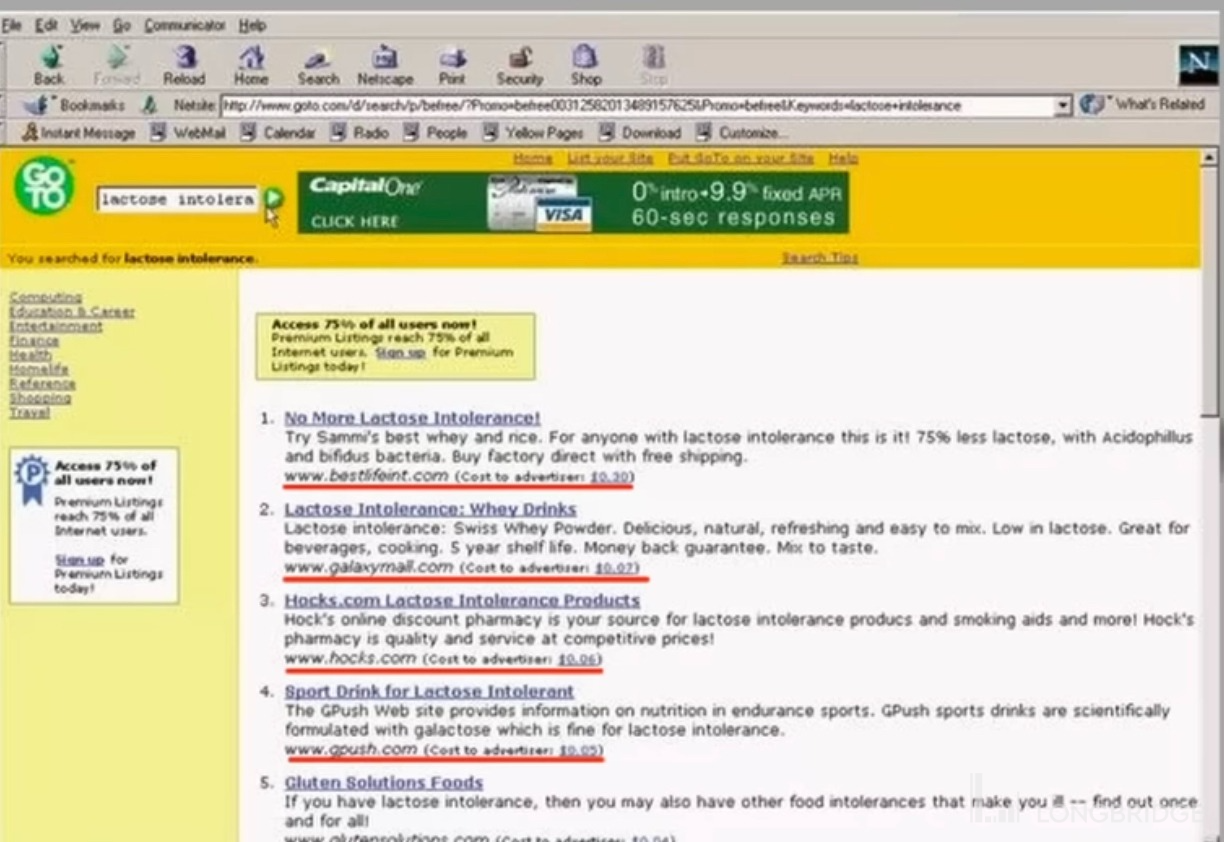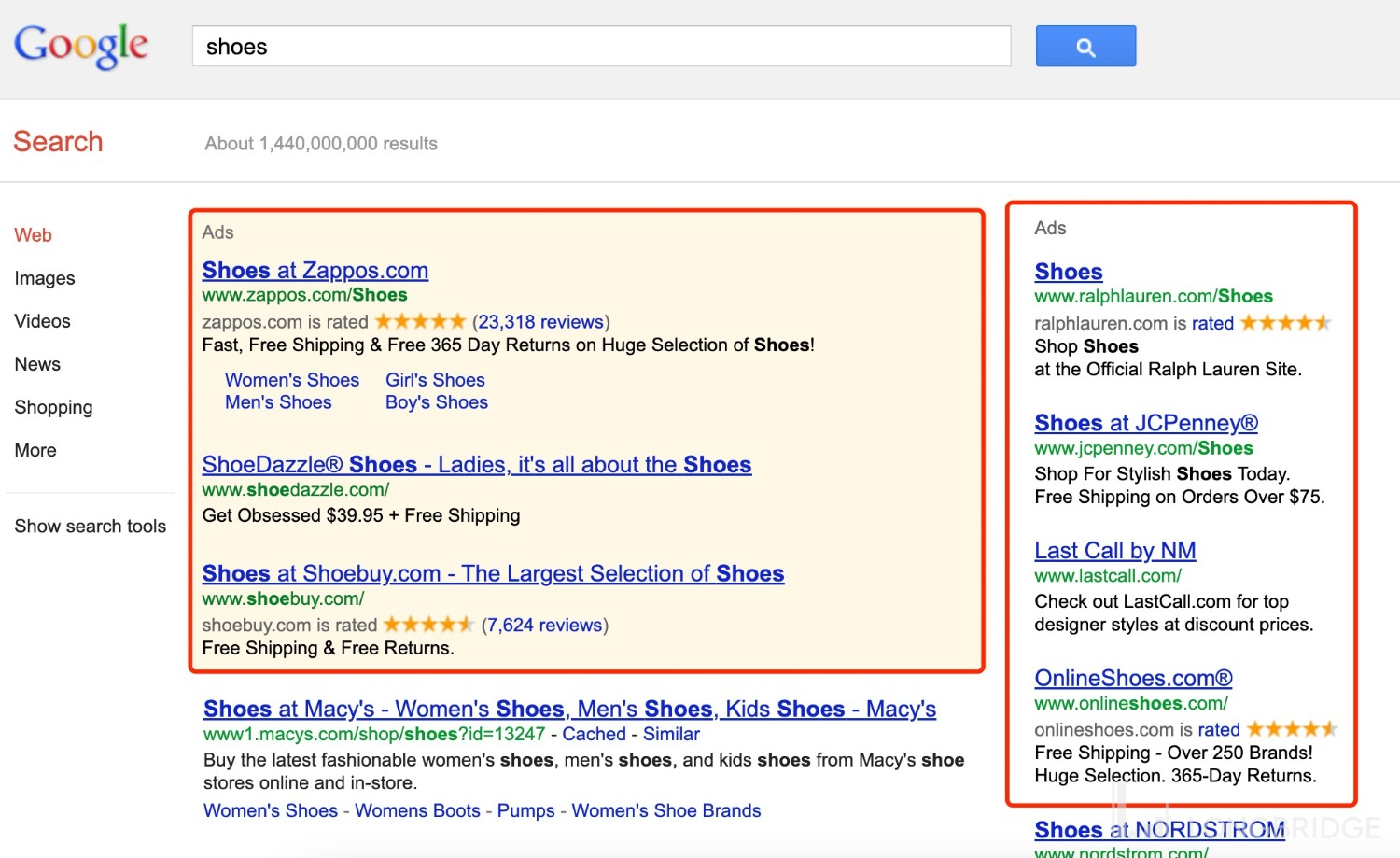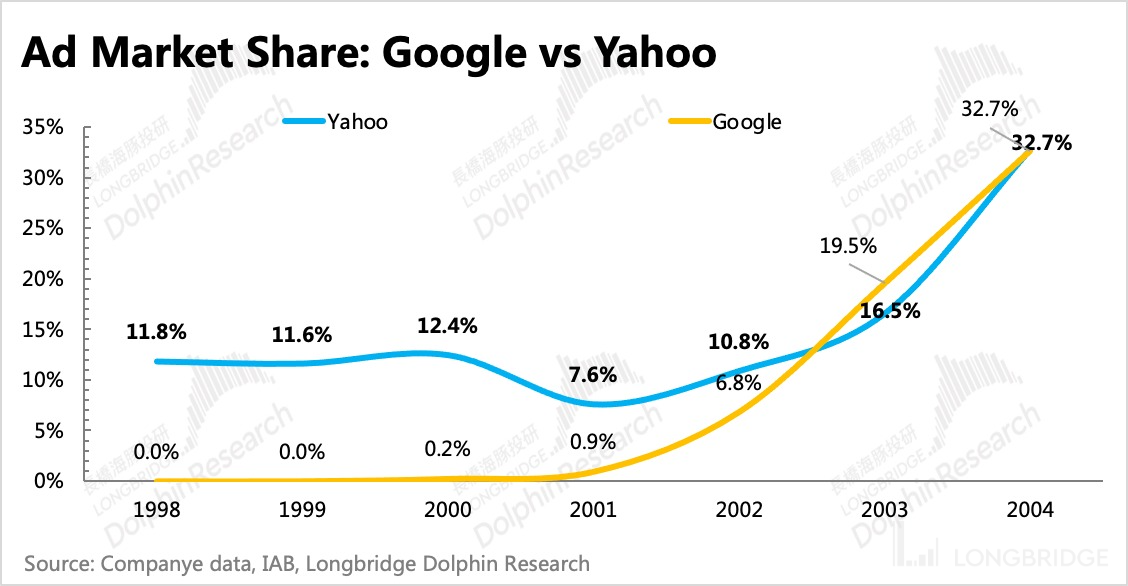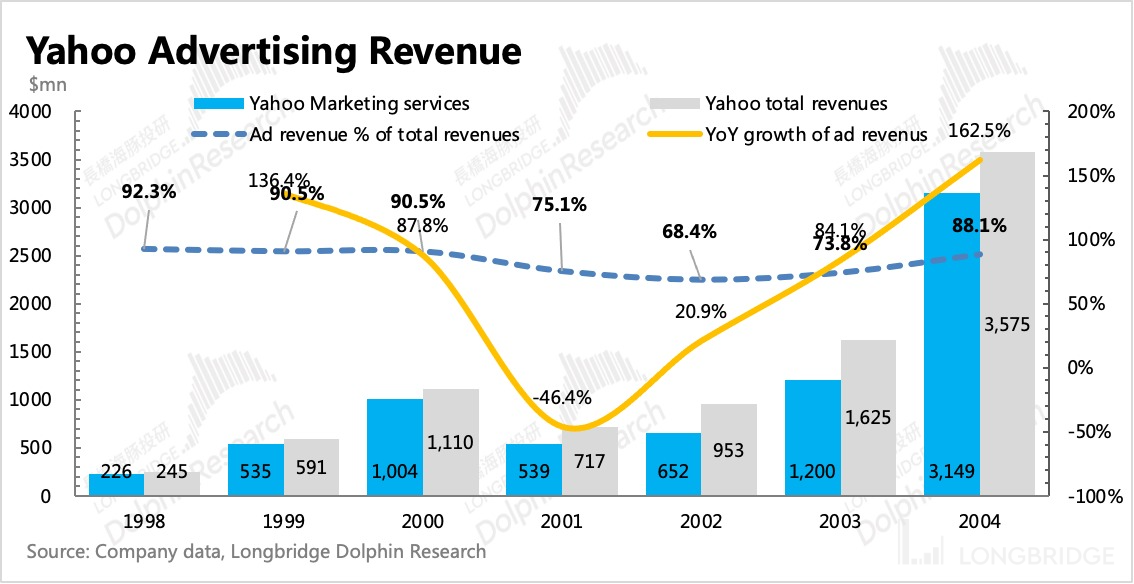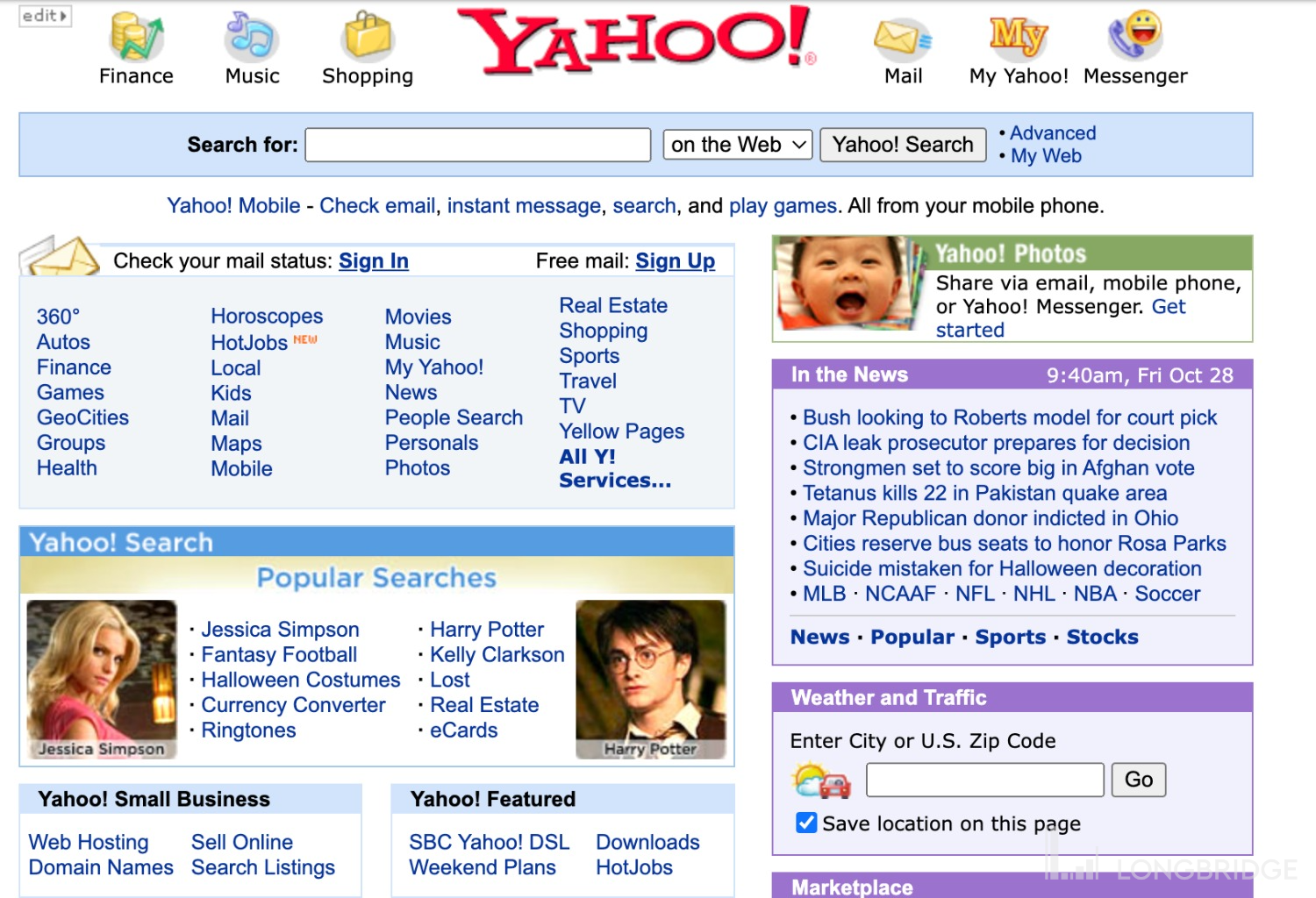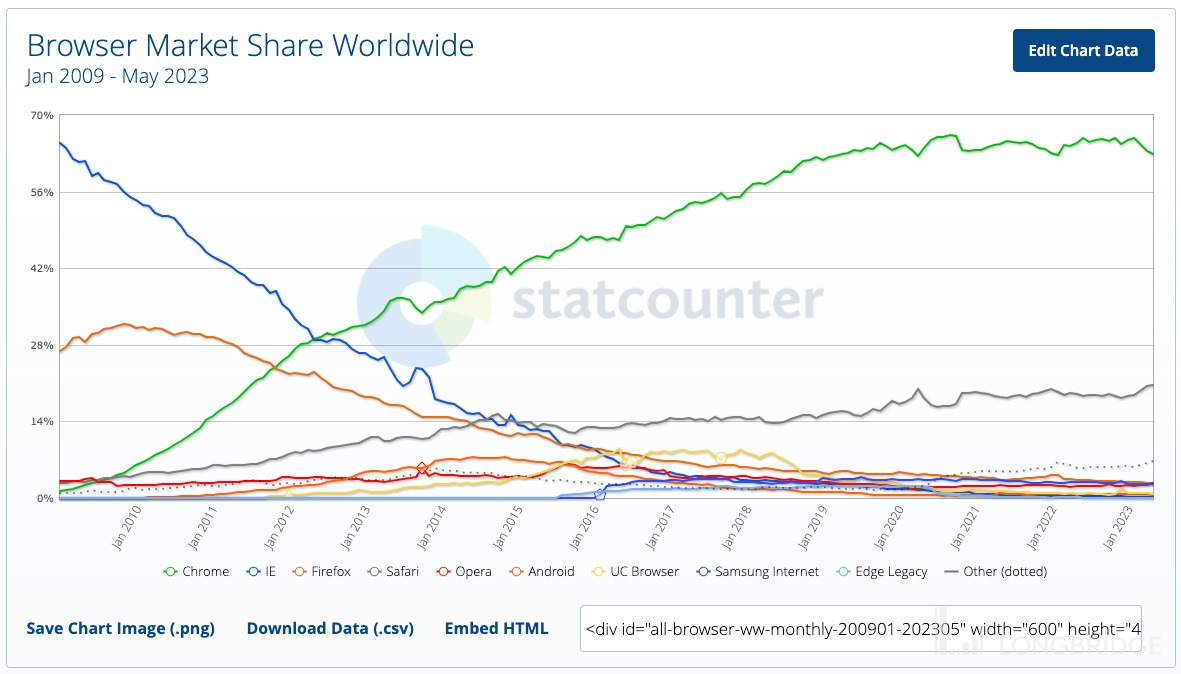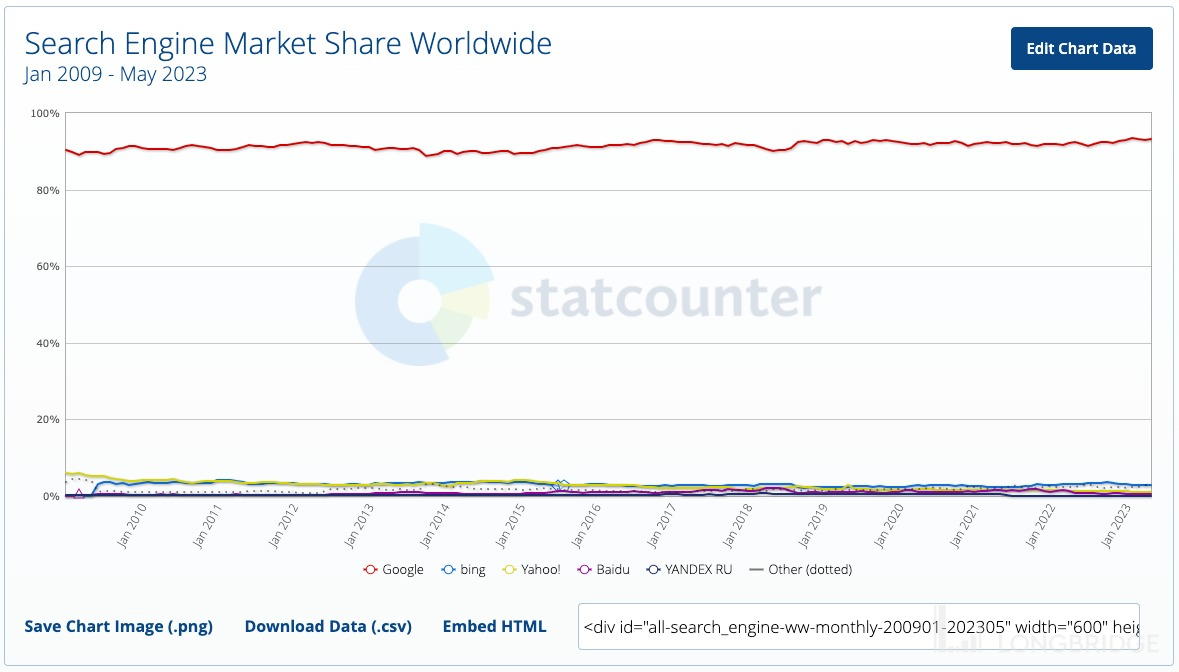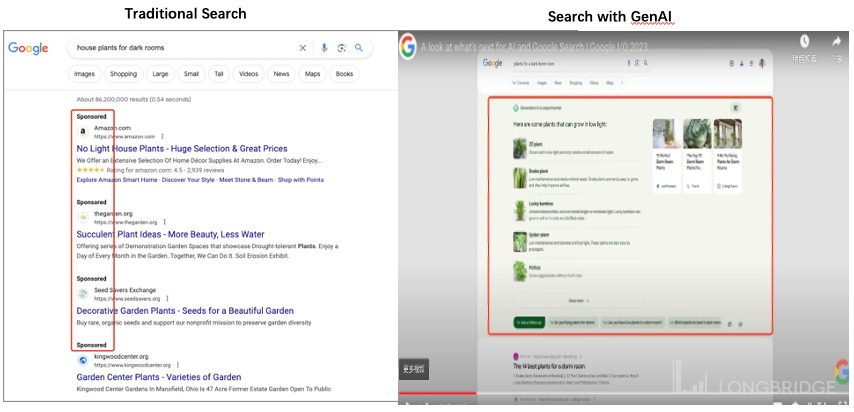
 Likes Received
Likes Received Posts
PostsDeep Article: Is ChatGPT the "Snap" that Kills Alphabet-C?

In just half a year, the AI war between global giants has gone through many rounds. The frequency of the two sides' swordplay is also increasing. For example, these days, ChatGPT has been upgraded again, model optimization, price reduction, and public GPT-4 to more users...
In terms of awareness/popularity, $Microsoft.US and OpenAI are temporarily superior. The confrontation between giants is distributed in multiple fields, such as chat, translation, graphics, work assistants, etc., but the most topical in the market is still the replacement and subversion of AI to traditional search engines.
This is because "traditional search engines" can basically be equated with "$Alphabet.US". As Google, with a market value of 1.6 trillion US dollars and 60% of its revenue coming from search advertising, if traditional search engines are overturned by AI, it means that the original business model needs to be reshaped. Every life and death moment of giants often attracts market attention.
For example, at this moment, the focus of controversy is whether Google can still maintain its original monopoly position in the digital advertising market in the new situation after the cards are scattered.
In the past three months, Google's stock price has suffered a significant decline at two moments, "Bard's release conference answered incorrectly" and "Bing's search increased its market share by 1%". But with the digital advertising market showing unexpected resilience, and Google's search share returning to its original state, Google's stock price has returned to more than 120 US dollars, slightly higher than Dolphin's neutral expected valuation before.

Source: Longbridge Stock Market
However, Dolphin believes that the rise in stock prices does not mean that the market's concerns about the crisis of traditional search engines have eased. Although Google's actions in AI in May have been continuous, advertisers have not yet undergone substantial budget migration with New Bing combined with ChatGPT.
But looking back at the time when Google's search entry overturned Yahoo's portal entry, it did not change overnight, so whether Google can become the next Yahoo or face Microsoft's competition every time in the past 30 years, it is still a question worth deep thinking and attention. In the previous article "US Stock Ads: After TikTok, Will ChatGPT Start a New 'Revolution'?" mentioned by Dolphin, we mainly discussed the impact of ChatGPT on Google's search business from the perspective of cost increase and weakening of short-term profit margin, and did not have much discussion on whether the entrance will be overturned.
On the contrary, Dolphin believes that it was not reasonable to prematurely price in the logic of "Google will be completely defeated" at that time (March), but it also missed an excellent opportunity to bottom out Google in the short term.
However, in this article, Dolphin mainly discusses the substitutability between "traditional search" and "AI Q&A" from a longer-term perspective. But to answer this question:
1) First, we need to review the historical trajectory of the changes in the previous generation of Internet entrances-How did Google defeat the first-generation web entrance portal Yahoo, the leaders of the first two search engines Inktomi and Overture, and defend against a round of attacks by technology giant Microsoft?
2) Secondly, by taking history as a mirror to deduce the "enterprise characteristics" and "core competitiveness" that Google has possessed in the past 30 years of dominating the search hegemony, can it still help Google stand firm in the new era of AI entrance?
Now let's get into the detailed content:
I. The essence of search engines-the inevitable product of information overload on the Internet
Nowadays, we all know that whoever controls the traffic entrance has imaginative business prospects. However, in the early development of the Internet, the initial purpose of building a traffic entrance was to organize the complicated Internet information and facilitate users to quickly reach the information they want.
Whether it is the portal website represented by Yahoo, which presents in the form of classified indexes, or the search engine represented by Google, which presents in the form of page relevance ranking, they are all ultimately aimed at solving the user's need for effective information acquisition.
Therefore, who is the most effective and who provides users with a better experience is the most core factor in determining which type of information presentation is better. However, as the amount of Internet information and the number of websites continue to increase, and the processing speed of hardware improves, users' requirements for information access efficiency are also constantly increasing, such as requiring faster and more accurate information access speed.
Therefore, in order to meet the higher needs of users, the technical capabilities and product forms that each traffic entrance needs to have will also continue to change.
1. The first-generation search engine-is the end of search the portal?
Before the first-generation search engine with a certain popularity was born, there were already search-type products, but they all had obvious bugs and could not meet the needs of users at that time. For example, Archie, a search engine that can only be applied to FTP servers, and WWW Wander, which is used for the web but only collects website addresses. Therefore, the first generation of meaningful search engines were products that solved the above pain points, with high penetration rates such as Infoseek, Yahoo, and Alta Vista. However, they used manual editing to classify and display all reachable web pages, more like a library catalog index. Therefore, the competitive difference between them lies in whose classification method is more in line with user habits and who can link to more web pages.
When the classification method and coverage of web pages could no longer be improved, under the pressure of profitability, almost all first-generation search engines transformed into portal websites that could be commercialized on a larger scale.
(1) Infoseek
Of these three search engines, Infoseek was the earliest to be founded and was also where Baidu CEO Robin Li worked as a core engineer. Infoseek not only provided basic search functions, but also included additional functions such as sending emails, news, foreign language searches, and regional searches. Most importantly, compared to its predecessors, Infoseek's search accuracy was significantly improved.
Therefore, when Infoseek became the default search engine for Netscape Navigator (the browser hegemon at the time), its market share reached 90%, an absolute monopoly.
But as they say, all good things must come to an end. Infoseek later went downhill with Netscape being defeated by Microsoft's free browser. In 1999, Infoseek was acquired by Disney, and its strategic positioning was greatly adjusted, mainly providing search engine technology for Disney's portal website Go.com, which was equivalent to internal support.

(2) Yahoo
The most well-known search engine that was established two years later than Infoseek is Yahoo (the early product prototype was launched in the same year as Infoseek), which transformed into a portal website earlier than Infoseek. This was mainly to attract traffic and induce users to stay on the platform for longer periods of time (making it easier for more users to see advertising displays), gradually developing into a portal website that could meet the information needs of more users.
Yahoo can be said to be the most successful transformation among the first generation of search engines. From its establishment in 1995 to 2000, it was the golden age of Yahoo's rapid development, and it was listed on Nasdaq in 1996, just one year after its establishment.
During the Internet winter at the end of the 20th century, as digital advertising revenue sharply declined, Yahoo began to transform into a paid service, such as charging for email, stock price quotes, games, music, recruitment services, and so on. But also because Yahoo focused on content services and ignored search, its search engine technology was later provided by external companies, including AltaVista, Inktomi, Overture, Google, etc.


(3) AltaVista
AltaVista was launched at the end of 1995 and did a lot of pioneering work in the field of search engines, including:
-
Providing both full-text search and directory search at the same time;
-
Users can use advanced search syntax such as And, or, not, etc.;
-
Provide 25 different languages;
-
Provide a picture search system LiveTopics
-
At the same time, because it can obtain a larger number of websites on the backend (claiming to have 21 million web pages with full-text indexing, even some obscure sites can be found), coupled with the support of its parent company DEC (Digital Equipment Corporation, the main advantage product is mini-computer) with more efficient processors (DEC's Alpha chip), it can provide better and faster search results, which is highly welcomed by netizens and can be called the Google of that time.
In 1996, AltaVista became the technical support for Yahoo search, and in 2003, it was officially included under Yahoo.

2. The era dominated by Google-the second generation of search engines
Compared with the first generation, the most significant feature of the second generation of search engines is to use technology to optimize search results. And because the competition among portal websites is already very fierce, the second generation of search engine companies were initially established to sell their search algorithms to other websites, that is, to obtain revenue through technology licensing. A typical example is Google, Inktomi, and Overture (formerly Goto).
(1) Inktomi
The technology was developed by Professor Eric Brewer of the University of California, Berkeley, and was first sold to the search website Hotbot, and then sold to Lycos, a successful community website at that time, together with Hotbot. Inktomi was once a technology provider for Yahoo. After its original provider, AltaVista, was acquired by Compaq and transformed into a portal, it directly competed with Yahoo and was therefore replaced by Yahoo.
After being acquired by Lycos in 1998, Lycos became the largest search engine at the time because it indexed 60 million files.

(2) Overture (formerly Goto)
Goto is more famous for pioneering the mainstream commercial model of later search engines. Goto was the first search engine to propose the PPC (Pay per click) pay-per-click advertising model and keyword bidding ranking.
Unlike early websites that used pop-up ads and banner ads to pay for CPM impressions, Goto sold search result display positions for keywords. The higher the company pays for a certain keyword, the higher its website appears when users search for that keyword.
Goto was also chosen by many search companies to represent their advertising business because of this advertising sales plan, such as AOL, Yahoo, Microsoft, etc. Google also used Goto's services in the early days.
(3) Google
Finally, there is the famous Google. Now we all know that Google's secret weapon is the web ranking algorithm (PageRank) and more optimization search technology around this core algorithm, but in the early days of Google's development, it was always a mystery to the outside world.
The core of PageRank is hyperlink analysis, which scores all websites. The scoring rule is: the more links pointing to a website, the more important it is; if a link is displayed on an important webpage, it will also receive a higher score. The final display of search results is sorted according to the score.
Compared with simple hyperlink analysis based on the number of links pointed to, PageRank also gives different weight coefficients based on the importance of the website providing the link, so it can give more reasonable scores to each website. For example, when a company A's website links only appear on the Yahoo website, and another company B's website links appear on a bunch of unknown websites, A's score is obviously higher than B's, even if B's links appear more frequently.
Google initially wanted to license PageRank technology directly to AltaVista, but AltaVista didn't think much of it. Of course, this is not AltaVista's shortsightedness, but because AltaVista had already been acquired by Compaq, a PC computer company, and purchased AltaVista to make money as a portal website. At that time, traffic was concentrated on portal websites, and it was difficult to make profits solely through search engines. The industry's view was mostly that the more perfect internet content and services provided to users, the more likely they would be retained. Therefore, internet companies at that time were more like online media companies, eager to expand their content business.
As Google did not go public until 2004, by the time this information, which was regarded as a commercial secret by the two founders, was made public, the competition in the search market had actually ended. In 2004, the digital advertising market was worth $9.6 billion for the entire year (Source: IAB), of which Google captured $3.1 billion, with a market share of over 30%.
According to ComScore's evaluation, Google's search share also reached 35% that year. If the share of providing search technology support to AOL and Excite is added, the total reaches a terrifying 44%.

However, in addition to the PageRank algorithm behind the webpage ranking, Google's front-end product form is also crucial. As we mentioned earlier, in the late 20s, the first generation of search engines, in order to obtain more revenue, all transformed into portal websites. The search homepage was filled with various tofu block information and brand advertisements, and the merchant's logo and advertising slogans even blocked the information content that users needed to reach.
Although many users had begun to complain, these platforms still focused on how to cover more internet services to earn more money, rather than using them to improve search technology. Therefore, when Google insisted on presenting simpler pages, faster retrieval speeds, and better search results to the public in 1998, there seemed to be a feeling of returning to basics, and Google quickly stood out.

In 1998, Google's daily search volume was still 10,000 times, and the next year it had reached 7 million times. By early 2001, when Google's commercialization officially began, its daily search volume had exceeded 100 million times.

Second, what did Google rely on to catch up later? Through a simple review of the development history of search engines in the past 30 years, it is not difficult to find that, apart from the innovation of search algorithms, Google is not the industry pioneer in other aspects, such as product form and business model. But what exactly did Google rely on to catch up and surpass its predecessors?
Dolphin summarizes it into three points.
1. The short-lived Overture - Business model is not a real barrier
In the early days of Internet development, the prototype of search engines often originated from academic research projects of famous universities, mainly used to build digital libraries for schools.

However, the original intention of academic developers to develop products is to solve problems, such as how to make the library index of the school better used, and they will not spend much effort on how to commercialize it. Therefore, those very useful search engines, except for technology licensing to other companies, for a long time, it was difficult to find a way to make money.
Before 2000, Google used a technology licensing business model, but the income was far from the high technology and equipment costs. For example, in 1999, Google's daily search volume had exceeded 7 million times, and the total cost of supporting it was $6.73 million, but the annual technology licensing revenue was only $220,000.
This profitability is not even enough to talk about returning to shareholders, let alone supporting itself. The $25 million received from two investment companies, Sequoia and Kleiner Perkins, in that year, if the loss trend continued, the cash on the account would be exhausted in less than 2 years.
But at that time, Yahoo was already thriving in advertising. In 1999, Yahoo's total revenue was $590 million, of which advertising revenue was $535 million, accounting for 91%, mainly from banner display ads and sponsored ads.
According to IAB, the size of the Internet advertising market in 1999 was $4.6 billion, a year-on-year increase of 141%, in an absolute period of rapid development. Although Google already had a lot of traffic at that time, it still did not focus on advertising monetization.

Source: IAB
Dolphin believes that the reasons are twofold:
1) Before finding the appropriate advertising method (that is, later PPC pay-per-click and keyword bidding ranking), advertisers did not fully recognize the commercial promotion value of Google, or more accurately, were not interested in the entire search engine.
Pure search engines often have simple pages with a lot of white space, with only a search box in the middle to minimize page loading time and speed up retrieval. However, as a page with user traffic, advertisers cannot insert more banner ads or sponsorships, which makes advertisers feel that search engines have no promotional value.
2) Another factor in the early days of not doing advertising was the founder's sentiment and self-restraint. After all, the original intention of launching the Google search engine for the off-campus market was to regain the user search experience that was influenced by advertising.
In fact, in 1998, Overture (formerly Goto) had already started using keyword bidding to generate advertising revenue. The bidding rule was simple: the highest bidder wins. The website of the advertiser with the highest bid can appear at the top of the search results for that keyword, which means that search results and websites with ads will be mixed together. In addition, if you pay more, you can also make the advertiser's website appear frequently in the search results.
At the bottom of the website links displayed in the final search results, there are naked prices, completely ignoring the user experience.

Overture's approach can be said to have maximized profits. If Google completely imitated this approach, it could also have made a fortune during the high-speed development of Internet advertising at that time.
However, founder Larry Page, the person who embedded his name into Google's PageRank algorithm, hates advertising very much. He believes that: A search engine sponsored by advertising will naturally be biased towards advertisers in the search results. An excellent search engine should be committed to showing users fewer ads or ensuring that the ads they see are also useful.
Therefore, Google continued to maintain its ad-free business model and product experience for a year until the Internet bubble burst in 2000, the scale of the Internet advertising industry was declining, and Google itself was operating at a serious loss and could not afford to spend cash. Even BusinessWeek wrote an article questioning Google's survival ability, "Can Google's purity bring returns?" Google finally "succumbed" to commercialization.
In the fourth quarter of 2000, Google launched its own advertising system, Google AdWords, which charges based on user impressions, which is the CPM pricing we are familiar with. In the first quarter of 2002, Google upgraded the AdWords system and began to provide CPC single-click payment pricing, opening the curtain for performance advertising. But compared to Overture's unrestrained insertion of ads, Google, under the insistence of its two founders, has retained some principles. This is also the reason why Google can earn money while still receiving good reviews from users.
① Ads are not mixed into search results, but are presented separately in a column at the top of the search results and on the right side of the page, with a clear dividing line and an Ads label prompt.

② Secondly, under the use of keyword bidding, the assessment index of ad click-through rate has been increased. Even if a company's bid for a certain keyword is much higher than that of other companies, if its ad click-through rate is low, its ad will also be moved to a less prominent position.
This approach can avoid some junk websites that some users don't like being displayed at the forefront of search results because they have the highest bid, which would affect the user experience. At that time, "the highest bidder wins" was almost a universal rule for all search and portal websites.
Google's improvement of Overture's business model fully demonstrates that its focus on user experience is still higher than that of its peers. And the leading advantage of search technology has played a very important role in the improvement of the business model.
Although later, after Overture was acquired by Yahoo, it sued Google for copying its business model, with Google and Yahoo shifting from competition to cooperation (Yahoo using Google's search technology), and Google giving Yahoo 2.7 million shares of stock compensation, the copying storm subsided.
2. The Tragedy of Giants and Their Decline - The Lack of Courage for Self-Revolution and the Disease of Large Enterprises
(1) The Tragedy of Yahoo - Self-Revolution Leads to Self-Redemption
In the early days of the Internet, Yahoo was definitely an entity that could not be ignored. For users, it led the Internet from closed and paid websites to an open and free platform.
However, Yahoo's decline may be explained by the fact that as the amount of Internet information increased and content services became more extensive, the classification index of portal websites could no longer meet users' needs. The positioning of portal websites would force the platform to be at a loss, becoming more and more bloated.
On the one hand, in order to retain traffic and resist the competition of other portal websites and small vertical platforms, the platform needs to acquire and expand more content and services on its own, and a conglomerate company with complex business lines has much higher management execution ability, which also leads to greater business risks.
On the other hand, a bulletin board full of ads does not meet users' needs. In order to meet shareholder returns, the company needs to be driven by its ability to make money, so it may become too aggressive in commercialization and neglect the improvement of user experience. Of course, Dolphin believes that the most fundamental reason is...
However, Yahoo did have the opportunity to switch. Before its first collaboration with Google in 2000, Yahoo made a lot of money from advertising, mainly riding the industry trend of expanding internet users and rapidly increasing online advertising penetration.
During the period from 1998 to 1999, when Yahoo's traffic was rapidly increasing, its advertising revenue should have expanded significantly faster than the industry's growth rate. However, Yahoo's advertising market share did not increase. It was not until 2000, when Google replaced Inktomi as Yahoo's new search technology provider, that Yahoo's advertising market share increased somewhat that year. Then came the bursting of the dot-com bubble, but Google took its first step towards commercialization.

Competition becomes more intense when the industry is in a downturn, so Yahoo was obviously affected by competition and its market share significantly declined in 2001. With the market rebounding in 2002, Yahoo began to regain more advertising market share through a series of media content and service acquisitions.

However, Yahoo's advertising is mostly fixed-position banner ads and sponsorships. Because it has always been keen on covering more media content and internet services, Yahoo seems to have never attached much importance to search engines.
In the early days, it was generally outsourced to technology providers such as AltaVista, Inktomi, and Google. Later, because it did not have the development capability for search technology (or was too lazy to invest in self-research), it simply acquired Inktomi and Overture together.
Dolphin believes that Yahoo's actions may be related to its lack of retrieval technology, but more importantly, if it highlights the search engine function on its website, the entire information presentation and product form need to be changed. Otherwise, it is difficult to balance the different needs of advertisers in the limited but expensive banner brand display and keyword click pay-per-click advertising.
If the focus is shifted to the search engine, and the number of homepage ad placements is reduced, will existing brand advertisers and sponsors permanently lose out in this product switching process? As a listed company, shareholder demands may also have a significant impact.
The potential cost is too high. For professional managers at the time, there was no need to take the risk of angering shareholders to make a radical transformation. Even when Google's search share continued to increase in 2005, but Yahoo's search share began to decline, the management was still enthusiastic about various external acquisitions. **

Source: Yahoo! Homepage in 2005
You can blame the management (then-CEO Terry Semel) for this mistake, which was caused by too much experience-oriented thinking and deliberately avoiding potential risks in order to explain to shareholders. However, this kind of strategic error caused by being swayed by shareholder interests can occur in any large listed company, after all, it is the hardest to change oneself.
(2) Microsoft's Lost Two Decades - The Big Business Disease of Giants
Microsoft is also a giant that is "jealous" of Google. In the early 1990s, although Bill Gates was aware of the importance of the Internet, he mentioned in an internal memo that Microsoft should firmly grasp it, and also listed several potentially key segments, including search engines. However, at the end of the 20th century, Microsoft's strategic focus shifted to projects such as MSN and email, which had clear business models that could immediately generate profits.
In addition, Microsoft at that time was also a giant plagued by lawsuits. The US Department of Justice has been holding on to Microsoft's monopoly position and officially filed an antitrust lawsuit against Microsoft in 1998.
While Google was seizing the Internet, Microsoft was still plagued by lawsuits, which obviously distracted Microsoft's management. When Microsoft finally paid fines to multiple companies to exempt itself from business divestitures and ended years of antitrust lawsuits, Google had already begun applying for listing. Since then, Microsoft's many moves have been resolved by Google.
(1) The technology gap is the core problem. In 2004, Microsoft secretly planned to announce the beta version of its search engine, and the original promotional copy stated that the search engine had already crawled 5 billion web pages on the Internet, surpassing the 4 billion previously disclosed by Google.
However, at this time, Google updated its crawl data on its homepage, doubling it from 4 billion to 8 billion, almost covering all known web pages at the time. This immediately made Microsoft, which was about to release its search engine, extremely embarrassed.
(2) Failure to leverage the browser. Microsoft, with its high penetration rate of the Windows system, also successfully installed a series of products in users' computers, one of which is the IE browser. Because it was free, the IE browser defeated the previous monopoly leader, the Netscape browser Navigator.
As we mentioned earlier, the Infoseek search engine once relied on a big tree for shade and occupied the search engine market by relying on the monopoly position of the Netscape browser. Therefore, if Microsoft's search engine uses its own free web browser to defeat Google, it seems logical.
In 2004, Microsoft's IE browser market share reached 95%, but FireFox, a browser with traces of open source code from Netscape, quickly tore open the monopoly gap of IE browser with its advantages such as fast loading speed, security, and rich add-ons. But at that time, Microsoft did not keep up with the product iteration and feature updates of IE browser in time.
In addition, in order to prevent Microsoft from using the browser to attack its own search engine market, Google turned to cooperate with Firefox browser, providing technical support and product application integration.
In 2008, Google began to launch its own Chrome browser, and with its simple pages, excellent rendering engine and constantly iterating features, it received praise soon after its launch. Later, Google firmly grasped the wave of mobile Internet, and under the role of the Android system, further improved the penetration of Chrome. Meanwhile, the market share of IE browser gradually declined due to security issues, obviously weaker performance and services.
Without the advantage of browser market share, Microsoft's search engine had no more leverage.

(3) The alliance with Yahoo was rejected. In the fight against Google, Microsoft also tried to team up with Yahoo, which had already shown signs of decline in 2008. In order to facilitate technical integration, Microsoft hoped to fully acquire Yahoo and offered a purchase price of $44.6 billion, which was 62% higher than Yahoo's stock price at that time.
Although Yahoo shareholders were very happy to have such a generous bidder, Yahoo founder Yang Zhiyuan was not willing to completely lose the autonomy of Yahoo's management. In addition, Yang Zhiyuan had a close relationship with the two founders of Google (he once encouraged Brin and Page to leave school and make Google bigger), and Yahoo had also had many business collaborations with Google.
Therefore, Microsoft's domineering operation was very disliked, and Yahoo decided to resist the malicious acquisition by increasing its valuation. Microsoft gave up the acquisition, and the two sides parted ways unhappily.
These three events show that although Microsoft missed the high-speed development window of search engines in the early days, it has been eager to try later. However, despite Microsoft's products such as operating systems and Office software, it still cannot penetrate into the Google search ability circle with technological leadership and traffic monopoly.
But Dolphin is more willing to attribute Microsoft's loss to Google's luck. In the early days of search engine competition, if Microsoft had not been made anxious by antitrust lawsuits, it might have realized the value of search earlier.
In addition, in the environment of the market as a battlefield, under different interests, the previous competitive relationship can also become an alliance, which also increases the difficulty of invasion by common enemies.
III. Google's future: Old Yahoo or New Google?
After reviewing so much, Dolphin's biggest feeling is that it is very similar to the turning point of the late 1990s.
The launch of ChatGPT has given users a new way to access information. Just as search engines are more convenient and effective than portal websites, if the accuracy can be guaranteed, ChatGPT's results returned to users' questions are also more efficient, which is equivalent to saving users the process of browsing web pages and organizing and summarizing multiple valuable information. From the current situation where the monthly number of visitors to the OpenAI official website reaches as high as 900 million, it is obvious that the user experience provided by ChatGPT is disruptive. Even like Google in the early days, without too much marketing promotion, it has achieved such a high penetration rate by relying on word-of-mouth communication between users.
So let's go back to the question we raised at the beginning of the article: Can Google's competitive advantages (technological leadership, user experience leadership, more suitable business model, and strategic mistakes of competing peers) in the era of AI still be reused?
- Technological leadership? The opponent is slightly better, but Google also has advantages.
Obviously, in new technologies, what is tested is the understanding and inference of front-end problems for users, and the integration and induction of all-network information for back-end. Currently, OpenAI has a slight advantage in front-end understanding and inference. Even when Google launched the latest Palm2 model, the score of this model in logical inference ability evaluation was slightly higher than that of GPT4.0, but because GPT4.0 already has a large number of user experiences on the front-end, it can be used to optimize its model.

However, for the induction of all-network information on the back-end,
Fortunately, Google has also been accumulating technology in AI, so it still has the ability to catch up in technology.
- User experience? It still needs to be observed. The traffic dividend is at the end, and the migration difficulty is relatively high.
Every time a new Internet product can successfully replace the old hegemon, it first wins in user experience. A better user experience that clearly subverts its predecessors will quickly migrate traffic.
However, this is more likely to happen during the period of high-speed growth of online traffic. Before the experience of core needs changes significantly, old users often have usage inertia and maintain a certain degree of stickiness to the original product. But when a new user becomes a netizen, it is easier to be directly attracted by the latest product. The rapid penetration rate of Google in the early stage was driven by this factor.
Currently, the number of global Internet users has approached 5 billion, and the penetration rate has reached 65%. Developed countries (also the countries where new technologies and products first penetrate), such as the United States, have a network penetration rate of up to 90%, and the growth dividend of the Internet traffic has been very small.
In this case, most users' cognition of information search is to use Google. If this part of users' usage habits is quickly switched to ChatGPT or New Bing, OpenAI and Microsoft may need to do more functional iterations. But at the same time, Google's Bard is also about to integrate with search engines and Workspace. The speed of catching up may not be enough to guide most users to switch their usage habits. Dolphin believes that this is probably the core reason why Google's search market share has returned to its original state recently. Fortunately, users are not switching quickly in this situation, and the market can track closely through third-party data to detect problems in a timely manner before possible trends emerge.

3. Business Model: How to Switch Smoothly? Short-term Impact is the Greatest
Previously, we discussed the short-term cost issue brought by AI. Although Microsoft will also face this issue, judging from the current search market share of 93%, the incremental cost of AI in the entire information search industry seems to fall on Google's head.
Therefore, Dolphin believes that considering the controllable cost, Google's new engine of AI+ search will definitely limit the usage times, or adopt another charging method for additional Q&A like OpenAI.
But will this new charging model cause user complaints? From this perspective, New Bing is more clever with a smaller market share, which can push Google out and put out the fire first.
After all, in the scenario of AI Q&A, although the links that provide information can be hung at the end of the answer like the original search result ranking (currently New Bing's way), compared with the previous search page:
1) The number of links that can be displayed is too small, especially the front end and right side of the Google search results page, which cannot release the original number of advertiser websites;
At Google's I/O developer conference on May 14th, the demo of the new GenAI search engine fused with Bard was released. In the demo screen, the 4-5 fixed advertising spaces that originally appeared at the top of the search result page (red box on the left) were replaced by AI Q&A results (red box on the back), while the non-advertising websites with relevance are the same as before.
If there is no better business model to fill this display method, it means that Google's advertising inventory will be greatly compressed.

2) If AI provides the information that users want, then the underlying links are no longer necessary for users to click, which reduces the bidding ability of CPC click-through paid advertising;
3) The mobile alliance advertising websites that rely on Google traffic distribution also lose their distribution ability after the page clicks decrease, which also reduces Google's revenue sharing from the mobile alliance advertising business, and this business brings 10% of Google's total revenue.
For small companies that have not yet gone public, switching business models means that investors have a higher risk tolerance. However, for Google, which has a market value of 1.6 trillion and 70% of its revenue comes from search + alliance advertising, it is like Yahoo at the beginning, and a slight change can affect the whole body. It is more likely to be swayed by shareholder demands during this critical window period. To achieve a smooth transition is too difficult.
However, Microsoft has smoothly built its business model through additional charges in the most suitable productivity scenario (Office product suite). Although New Bing will also encounter Google's problems, Microsoft is obviously much more relaxed than Google.
Perhaps Google will eventually explore a suitable business model and help the company develop to a higher stage (after all, technology, user experience-based product design, and all-network information content all have certain advantages). But in the short term, the risk of performance being affected during the switching period is still not small.
Currently, with the market's expectation of advertising rebounding, Google, with a market value of 16 trillion yuan, has risen to the neutral expected value of Dolphin. However, considering such uncertainties and OpenAI's fierce attack on the product side (different from Microsoft's slow iteration on the IE browser), Dolphin will look for a suitable time to reduce its holdings of Google in the short term. The specific timing of the operation can be followed in Dolphin's weekly strategy report on Mondays.
Dolphin Investment Research "Google" Historical Collection:
Earnings season
April 26, 2023, conference call "AI competition never stops, landing masters look at search and cloud (Google 1Q23 conference call minutes)"
April 26, 2023, earnings review "Google: exceeding expectations against the trend? Joy and worry"
February 3, 2023, earnings review "Compared with simply cutting fingers, pay more attention to revenue growth (Google 4Q22 conference call minutes)"
February 3, 2023, earnings review "Short-term pressure is not small, Google needs to learn from Meta"
October 26, 2022, conference call "Short-term optimization of resources, opportunities still lie in search and YouTube (Google 3Q22 conference call minutes)"
October 26, 2022, earnings review "Google: Recession is approaching, the advertising leader has fallen" On July 27, 2022, conference call "Google: High Economy in the Second Half of the Year, Concentrating Investment in Long-term Prospects (Conference Call Minutes)" and financial report review "Google: Tough Handover under the Expectation of Thunderbolt" were released.
On April 27, 2022, conference call "Management Avoids Talking about TikTok, but Competition Intensifies behind the Emphasis on Shorts (Google Conference Call Minutes)" and financial report review "Google: Big Brother is Also Struggling in the Headwind" were released.
On February 2, 2022, conference call "Google Actively Seeks Expansion by Increasing Investment and Accelerating Recruitment (Conference Call Minutes)" and financial report review "Google: Rare Stock Split and Bright Performance, Ready to Take Off Again" were released.
In-depth
On February 21, 2023, "US Stock Advertising: After TikTok, Will ChatGPT Start a New "Revolution"?" was released.
On July 1, 2022, "TikTok Wants to Teach the "Big Brothers" How to Work, Google and Meta Want to Change" was released.
On February 17, 2022, "Internet Advertising Overview-Google: Watching the Wind and Clouds Rise" was released.
On February 22, 2021, "Longbridge Research | Analyzing Google: Has the Restoration of the Advertising Leader Ended?" was released.
On November 23, 2021, "Google: Performance and Stock Price Soar, Strong Restoration is the Theme of the Year" was released. Risk Disclosure and Statement for this Article: Dolphin Investment Research Disclaimer and General Disclosure
The copyright of this article belongs to the original author/organization.
The views expressed herein are solely those of the author and do not reflect the stance of the platform. The content is intended for investment reference purposes only and shall not be considered as investment advice. Please contact us if you have any questions or suggestions regarding the content services provided by the platform.

